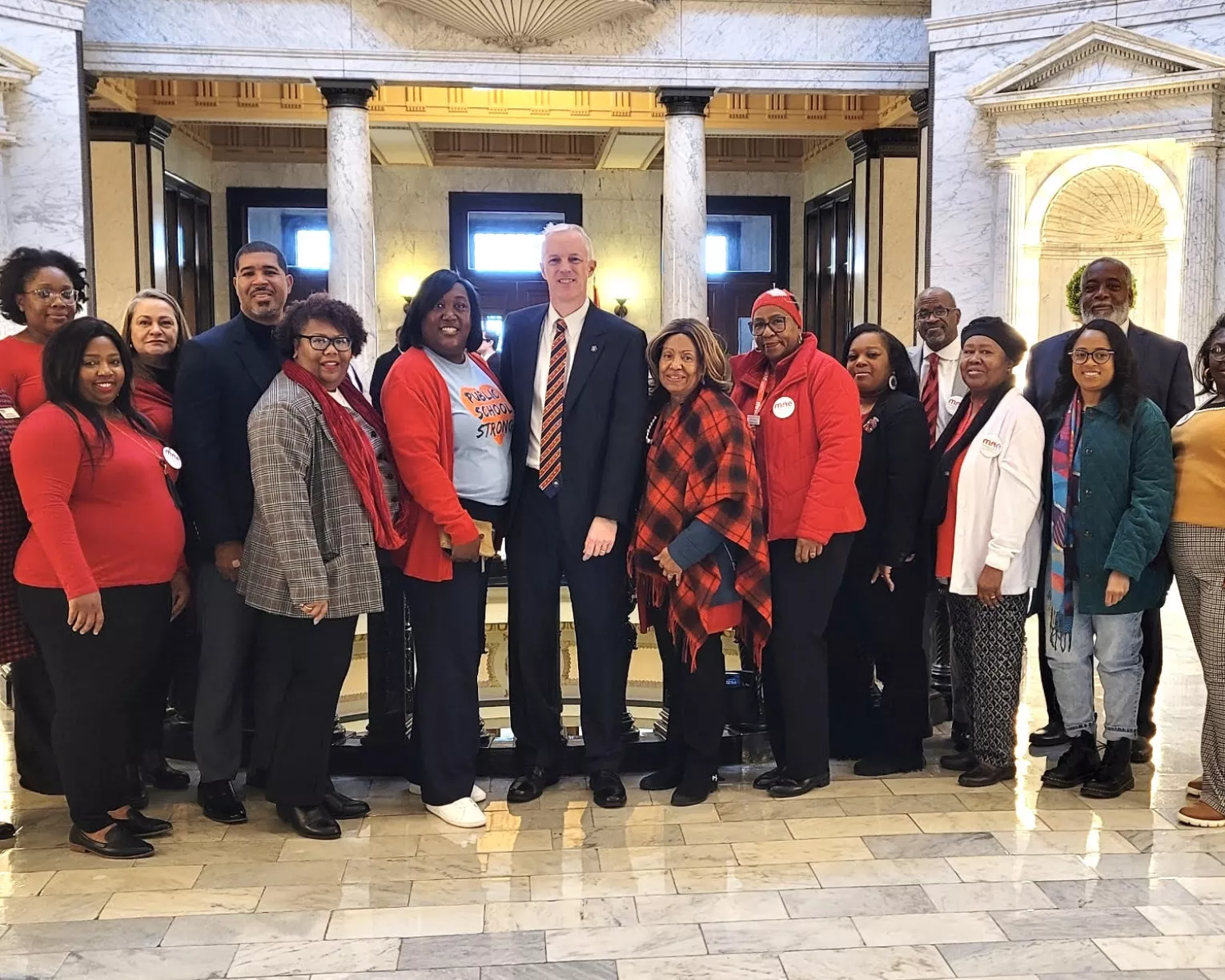
Key Takeaways
- The union advantage is clear. Faculty with the power to collectively bargain get paid more than their peers—even in the same states.
- Inequities abound. Faculty at historically Black colleges and universities (HBCUs) get paid less. So do women faculty, everywhere.
- NEA's latest research reveals average full-time faculty salaries at every public college and university in the U.S., showing which institutions and states have the highest and lowest pay.
The new 2023 NEA Higher Education Faculty Salary Analysis shines a spotlight on persistent inequities among faculty pay in the U.S.
Women are paid less.
Faculty at historically Black colleges and universities (HBCUs) are also paid less.
People who teach future teachers are paid less, too.
Indeed, if you want to construct a faculty member almost guaranteed of a lower-than-average salary, make her a woman at an HBCU in the South, dedicated to teaching her students how to be an excellent teacher.
But the faculty salary analysis also shows how to improve her salary. Get her a union membership. On average, according to the 2021 – 2022 federal salary data analyzed by NEA and its independent consultants at ASA Research, faculty at public institutions where union members sit down at the bargaining table to negotiate for pay earn about 15 percent more than faculty at public institutions without collective bargaining.
Here are five things to know from the annual salary report:
1. Yes, Unions Do Make a Difference!
The bottom line is that faculty in unions get paid more. In 2021 - 2022, on average, faculty in unions were paid about $5,000 more than non-union faculty—in the same states. For faculty who work in states without unions, the difference is extreme: they get paid $17,000 less, on average, than faculty represented by unions.
Depending on the type of institution, the union advantage varies. Among community college faculty, union faculty earned $19,000 more, on average, in 2021 - 2022, than their colleagues without contracts. At comprehensive state colleges, the union advantage was $14,000; at research universities, it was $6,000.
These numbers show what unions members already know: When they sit down at the bargaining table and raise their voices together, they have more power. Consider what happened in 2019 at Clark College in Vancouver, Washington. After 15 months of bargaining and a two-day strike, the union achieved as much as $11,000-plus raises for some of its 500 faculty members, plus the seeds of parity between part-time and full-time faculty. (The administration’s original offer? Less than 1 percent pay raises.)
“There were people crying, they were so happy to get these raises,” said union president Suzanne Southerland. And it happened, she said, because of the union’s strength and solidarity.
2. The HBCU Pay Penalty is Still a Problem.
While faculty at the nation’s Historically Black Colleges and Universities (HBCUs) see vast rewards in their work with students, they can’t feed their families with that kind of compensation. On average, HBCU faculty earned $23,903 less in 2021 - 2022 than their colleagues at non-HBCUs. Or, put another way, they were paid 75 cents for every dollar paid to faculty at other institutions.
Although many HBCUs are in the South, where salaries tend to be lower, the problem isn’t geography. Looking specifically at HBCUs established through federal land grants, HBCU faculty earn about half as much as their peers at the non-HBCU land-grant institutions in the same states. For example, faculty at the two land-grant HBCUs in Missouri and Ohio earned 51 cents for every dollar paid to their peers at the University of Missouri and Ohio State University, in 2021 – 2022.
The work is rewarding—when dedicated HBCU faculty focus on the benefits to their students. But the rewards certainly aren’t financial. If University of the District Columbia (UDC) assistant professor Christian Aguiar went to work for WalMart as a truck driver, he could nearly double his salary. “I know most of America has second jobs. My family members do,” says Aguiar. “But there is also the sense that if you have a teaching job at a major public university in the United States, you shouldn’t have to work a second job.”
3. Inflation Hurts.
While average salaries for faculty increased slightly in 2021 - 2022 (about 2 percent), inflation stripped those dollars of purchasing power—with an overall loss of $4,837 per person, on average, according to the NEA analysis. As a result, faculty likely felt poorer than they had in a long time. Indeed, faculty’s purchasing power in 2022 was lower than it was 15 years ago, in 2007.
4. Who You Are Still Matters.
In 2022, women faculty were still paid just 85 cents, on average, for every dollar paid to their male peers.
Women came closest to pay equity at community colleges, where women faculty were paid 97 percent of men’s earnings in 2022. At research universities, which tend to have the highest salaries, women were paid 89 percent of what men got.
Generally, NEA’s research shows that women are most likely to teach in the types of colleges with the lowest pay (community colleges), in the kinds of departments that aren’t as valued (like education), and among the lowest ranks of faculty. At U.S. research universities, which pay far better than community colleges, women constitute just a third of full professors, the highest paid rank.
In 2021, NEA Today explored how unions are closing the pay gap for women faculty by negotiating equity pay raises, paid parental leave, and subsidized childcare, which help women to stay in academia and climb the career ladder. Much more work still needs to be done, say union leaders.
5. What You Teach (and Where) Also Matters.
The converse to that poorly paid woman teaching education at an HBCU in the South exists. This well-paid character is a man. Definitely a full professor. More likely than not, he teaches medicine. And, based on NEA’s annually updated list of average salaries from every public college and university in the U.S., he’s probably at a research university in California. Other research shows he’s likely White, too.
Faculty pay depend a lot on faculty rank and institutional type, and also on what and where faculty teach, NEA research shows. Generally, at public institutions, associate professors are paid about three-quarters of full professors’ salaries; assistant professors about two-thirds; and lecturers or faculty without rank about one-half.
The type of institution also matters. Community college faculty generally earn about 75 cents to the dollar of university faculty.
Among four-year colleges and universities, the top five-paying states in 2021 – 2022 were the strong union states of California, New Jersey, Delaware, Hawaii, and Connecticut. The bottom two? Louisiana and Mississippi. Among community colleges, the top three were California, New York, and Michigan; the lowest-paid were Arkansas and Louisiana.
Meanwhile, what’s taught matters, too. Health and science faculty are the best paid at four-year institutions, while education and library science professors are paid worst.

